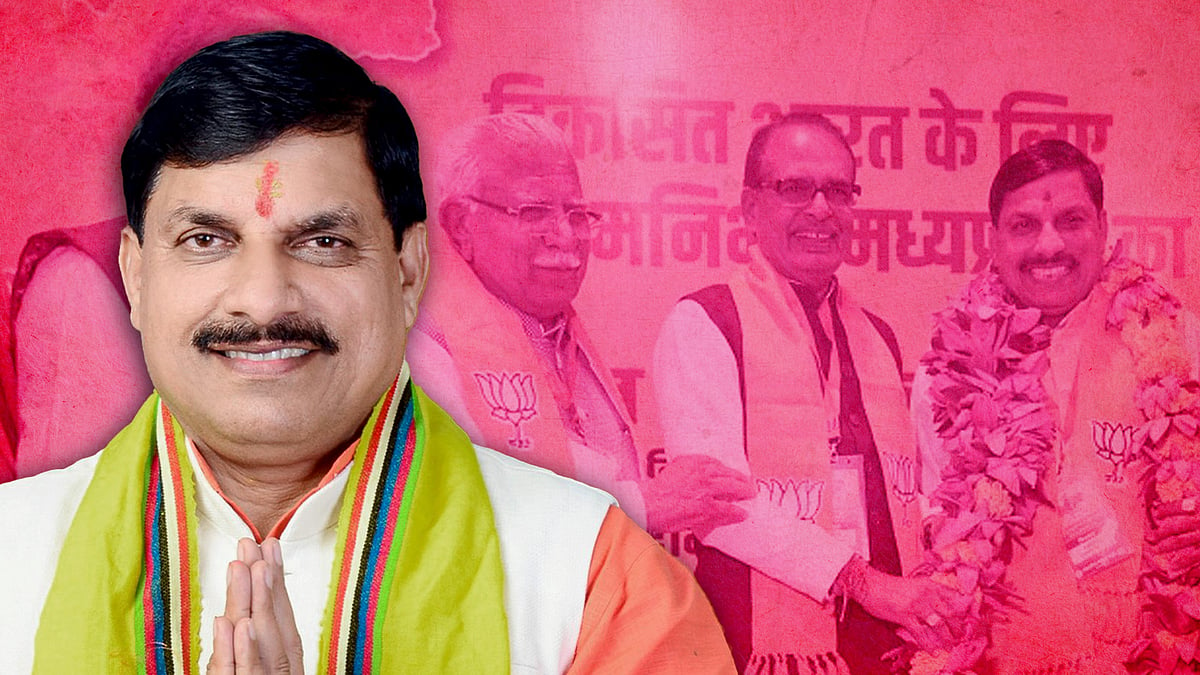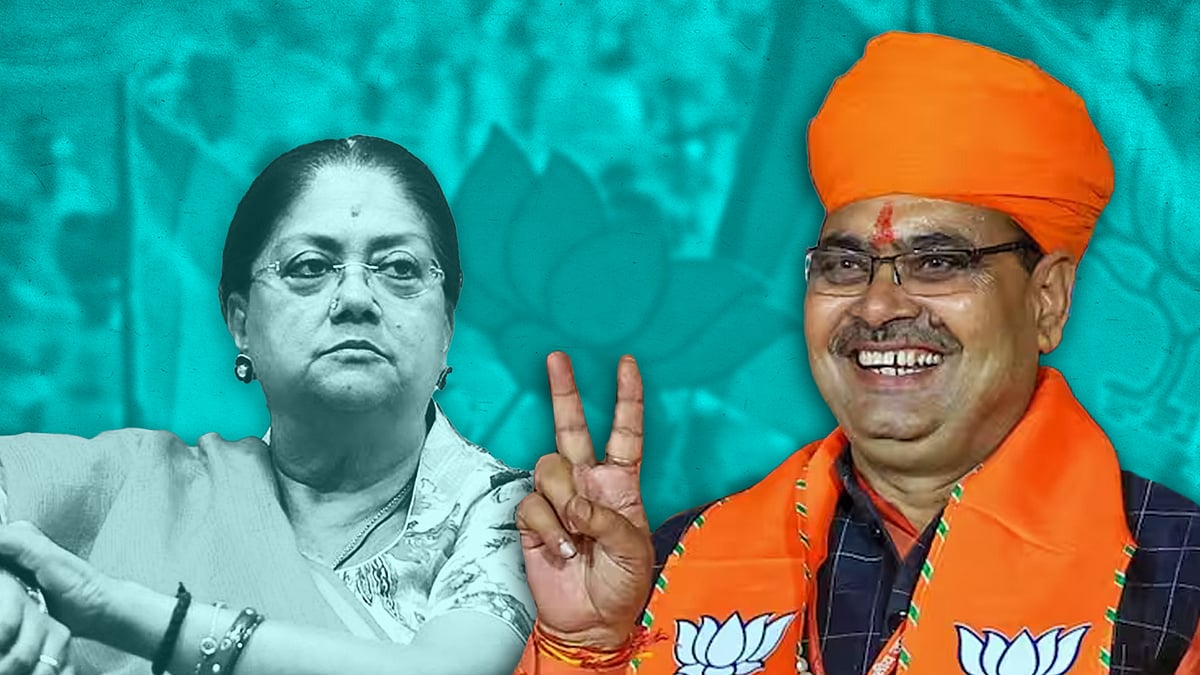New crop of state leaders, institutional reset, social calculus: Why BJP picked new CMs
The lowkey state leaders could be seen as Modi’s overarching presence in state politics.
This week, the long wait for the Bharatiya Janata Party’s chief ministerial picks for Madhya Pradesh, Rajasthan and Chhattisgarh was over with the party making unforeseen choices even by its own scale. The BJP leadership has been known to make such unconventional moves in recent years.
Putting to rest a range of speculations, the BJP steered clear of obvious choices, opting for relatively less known names as chief ministers, and their two deputies in each of the three states in which the party had recorded convincing wins in the recently concluded assembly elections.
In Chhattisgarh, Vishnu Deo Sai was named the CM, with Arun Sao and Vijay Sharma as his deputies. Mohan Yadav was picked for the CM’s office in MP, with Jagdish Devda and Rajendra Shukla as his deputies. For Rajasthan’s CM, the party named Bhajan Lal Sharma, with Diya Kumari and Prem Chand Bairwa assigned the role of his deputies.
As usual, those making attempts to decode the party’s reasoning behind these choices have been looking for clues, and also offering explanations for the moves.
While a number of factors can be attributed to the party’s decision, a larger frame to understand them could be in terms of the party’s internal dynamics and the external messaging that it’s trying to accomplish through these choices.
At the same time, another perspective on the move could be shaped by looking at the party’s central leadership strategy in the short run, and its policy for grooming leadership in the long run. Both are matters of empirical political testing for the party. Within these frames, some of the core determinants of the choices for state leadership can be identified.
First, as a cadre-based political party, the BJP’s push for a second line of state leadership, as an adjunct to the central one, reflects an effort to re-institutionalise the party. This is after a decade of shift in the role of the old guard in states, if not their downsizing.
This means that over the recent few years, the BJP has been at a stage where the central leadership is keen on erecting a second line of political leadership – with its imprint, and thus the reset ushering in a new form of institutionalisation.
Notably, many commentators see this time as a period of deinstitutionalisation of the party under the central fold of Modi-Shah leadership.
But this can be called a form of re-institutionalisation in which provincial heavyweights like Shivraj Singh Chouhan in MP, Vasundhara Raje Scindia in Rajasthan or Raman Singh in Chhattisgarh may not fit into the chief ministerial frame, even if other roles may await them.
This form of party de-institutionalisation, followed by efforts of de novo re-institutuinalisation, was seen in the Indira Gandhi-led phase of Congress leadership.
However, it was left incomplete because of her untimely death. It was also undermined by the fact that unlike the BJP of today, the Congress didn’t have cadre cohesion and order. These key differences between the two periods of history and two parties aside, the common point seems to be the high command hold over the provincial party leadership.
In the BJP, such provincial overhaul had been practised on a limited scale earlier, and perhaps they were shaped more by circumstances rather than a policy outlook of the party.
The sudden elevation to chief minister of Gujarat, for instance, for Narendra Modi in 2001 and that of MP for Shivraj Singh Chouhan in 2005, could be more explained by the prevailing political situation in these states at that time. Now, the experiments with new leadership in the state seem more in the nature of reconfiguring the apparatus of state leadership. In the process, it is also an attempt to craft a new crop of state leaders to carry forward the party line.
Second, there is an element of immediacy to the decisions, and it’s difficult to decouple it from the strategy for the Lok Sabha polls next summer, only four months later.
As the persona of Prime Minister Narendra Modi loomed large over the campaign in the recent assembly polls, the subtext of these decisions about state leadership could also be that Modi momentum persists in the electorate for the following few months.
The thinking might be that going for state heavyweights might offset a part of the projection of Prime Minister Modi as the pivot of the party in the states too.
Even if such reasoning might imply concentration of leadership, the strategy seems to be to build on the momentum of the PM’s personal appeal by letting lowkey state leaders be seen as his overarching presence in state politics. Besides the nature of the campaign in recent polls, even the PM’s speech at the BJP headquarters didn’t broach the state leader’s role - perhaps signalling how the party wants to pitch its national messaging, only a few months before the big 2024 national polls.
Third, the balancing of caste representation can also be seen in how the three states have tried to tap into different segments of the social demography of the electorate.
In MP, the tilt towards Mohan Yadav, an OBC leader from the Yadav caste group which has numerically and politically significant presence in other Hindi heartland states like UP and Bihar, could be a part of broader messaging.
BJP – that has a large section of OBC workers as well as voter base – has been trying to neutralise any ripple effects of the opposition plank of caste census and weaning away the OBC support base.
However, the party’s choice of deputies in the state shows an attempt at balance by opting for a scheduled caste leader and the other deputy from the Brahmin caste group.
In Chhattisgarh, the tribal outreach is seen in the choice of CM, but the balance is being sought through a deputy from the OBC and another from an upper caste group.
In Rajasthan, a Brahmin CM, not neglecting the caste support group, is supplanted by a Dalit deputy and another deputy from the Rajput community. This has also meant that the party circumvented the Rajput-Jat divide in the support groups.
Such attempts at striking a social calculus of support groups could also be a factor in making decisions about the chief ministerial office and that of the deputies.
Fourth, the lines of association of the leaders and endorsement of the larger Sangh parivar units like the RSS also signal a push for ideological cohesiveness.
To some extent, the BJP central leadership could have weighed in on this aspect, but it couldn’t be the overriding factors in the party’s current set up.
However, the choices signal a reward system in a cadre-based unit, and hence, shows a form of political reinforcement for the ideological causes and the groundwork put in by the party workers for years.
These are some of the ways in which the BJP’s pick for state government leadership in the three states reflect the party’s attempt to re-institutionalise its state units in tandem with the party’s current strategic outlook.
To an extent, these also coincide with the lines of political reasoning that the party has adopted as its approach to the forthcoming electoral battles. Even if a bit unexpected, the party’s thrust for a new form of provincial leadership seems to be a new order of leadership subsets that the party is seeking to build around the pivot of national organisation.
 ‘Modi-like, blue-eyed boy of RSS top leader’: The meteoric rise of Madhya Pradesh CM Mohan Yadav
‘Modi-like, blue-eyed boy of RSS top leader’: The meteoric rise of Madhya Pradesh CM Mohan Yadav Milk vendor, sarpanch, rebel, CM: Bhajan Lal Sharma’s journey to Rajasthan’s top post
Milk vendor, sarpanch, rebel, CM: Bhajan Lal Sharma’s journey to Rajasthan’s top post